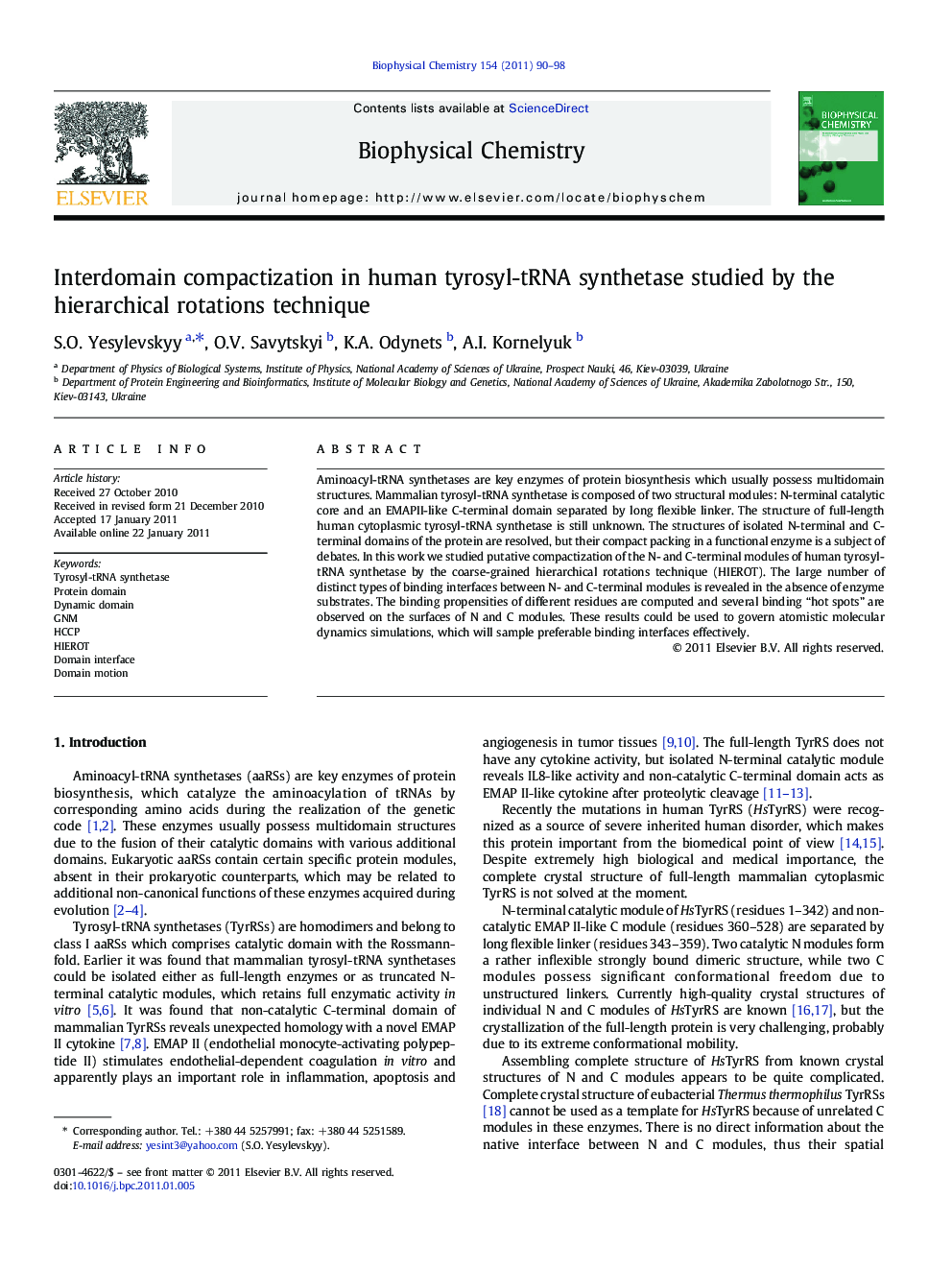| Article ID | Journal | Published Year | Pages | File Type |
|---|---|---|---|---|
| 5371558 | Biophysical Chemistry | 2011 | 9 Pages |
Aminoacyl-tRNA synthetases are key enzymes of protein biosynthesis which usually possess multidomain structures. Mammalian tyrosyl-tRNA synthetase is composed of two structural modules: N-terminal catalytic core and an EMAPII-like C-terminal domain separated by long flexible linker. The structure of full-length human cytoplasmic tyrosyl-tRNA synthetase is still unknown. The structures of isolated N-terminal and C-terminal domains of the protein are resolved, but their compact packing in a functional enzyme is a subject of debates. In this work we studied putative compactization of the N- and C-terminal modules of human tyrosyl-tRNA synthetase by the coarse-grained hierarchical rotations technique (HIEROT). The large number of distinct types of binding interfaces between N- and C-terminal modules is revealed in the absence of enzyme substrates. The binding propensities of different residues are computed and several binding “hot spots” are observed on the surfaces of N and C modules. These results could be used to govern atomistic molecular dynamics simulations, which will sample preferable binding interfaces effectively.
Graphical abstractDownload full-size imageResearch Highlights⺠Dynamic compactization of domains in human tyrosyl-tRNA synthetase is observed. ⺠The binding propensities of the residues and the binding “hot spots” are computed. ⺠Large number of possible compact structures is observed. ⺠These data may govern subsequent atomistic Molecular Dynamics simulations.
